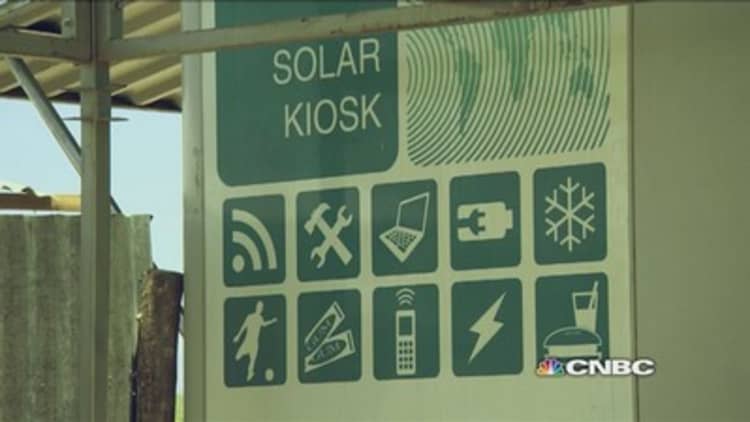A team of researchers has found the oldest set of stone tools ever known to science on the shore of a lake in Kenya.
The tools are simple: rocks that are shaped (or "knapped") by having been pounded on a surface and chipped into a needed shape.
Our discovery instantly pushed back the beginning of the archaeological record by 700,000 years, or over a quarter of humanity's previously known material cultural history.Sonia Harmandresearcher
But the discovery provides solid evidence challenging the notion that the things that made humans unique (and uniquely successful) among primates all evolved around the same time, and suggests that other, more distant relatives may have had some of the same abilities.
Read MoreCan the cloud help end police violence?
The artifacts show that hominins—ancient, humanlike primates closely related to humans—knew how to fashion their own tools out of stone at least 3.3 million years ago—almost a million years before scientists had previously believed, according to the study.
"Our discovery instantly pushed back the beginning of the archaeological record by 700,000 years, or over a quarter of humanity's previously known material cultural history," wrote lead author Sonia Harmand, of the Turkana Basin Institute at Stony Brook University and the Université Paris Ouest Nanterre in a press release. (Tweet This)
Many primates, including chimpanzees, use items like sticks as tools to catch termites, and other species even use rocks as tools. But actually making a tool by chipping away flakes of rock was thought to be something exclusive to members of the genus Homo, which is believed to have first appeared roughly 2.8 million years ago, and which includes modern humans.
The "traditional view," according to the researchers, was that stone tool making evolved along with other key human traits, such as language and meat-eating, at about that time.
How they came to the 3.3 million figure

Anthropologists have questioned that view in recent years, but this find provides solid evidence.
The scientists cannot say for sure what kind of hominin made or used the tools, but it is possible that they were made by a hominin a bit more distantly related to us.
To put the discovery further in perspective, it is generally believed that the earliest modern humans, Homo sapiens, began appearing in Africa about 200,000 years ago.
Read MoreSmartphones are facing extinction.Seriously!
Researchers figured out the age of the tools by digging out chunks of sediment from various depths in the earth around the tools and then running those samples through a system that measures the magnetic polarity of the minerals magnetite and hematite in the sediment.
Those results can tell scientists a lot. The Earth's magnetic field has reversed from time to time over its history, so minerals found at different levels of earth have different magnetic polarities. Scientists can use these changing magnetic polarities in the minerals in ancient layers of earth to determine the age of something contained among them.
"We essentially have a magnetic tape recorder that records the magnetic field ... the music of the outer core," Kent said.


